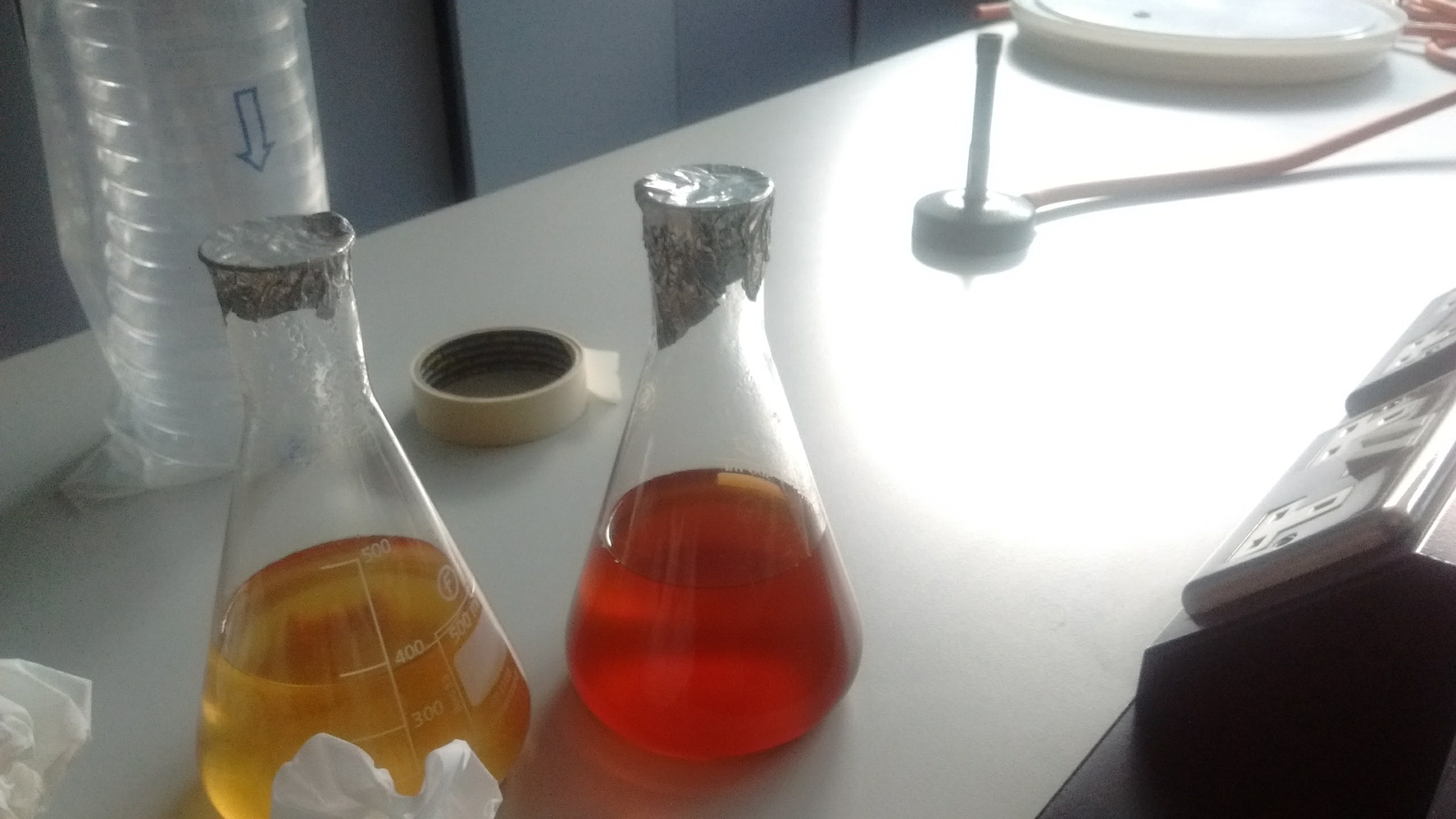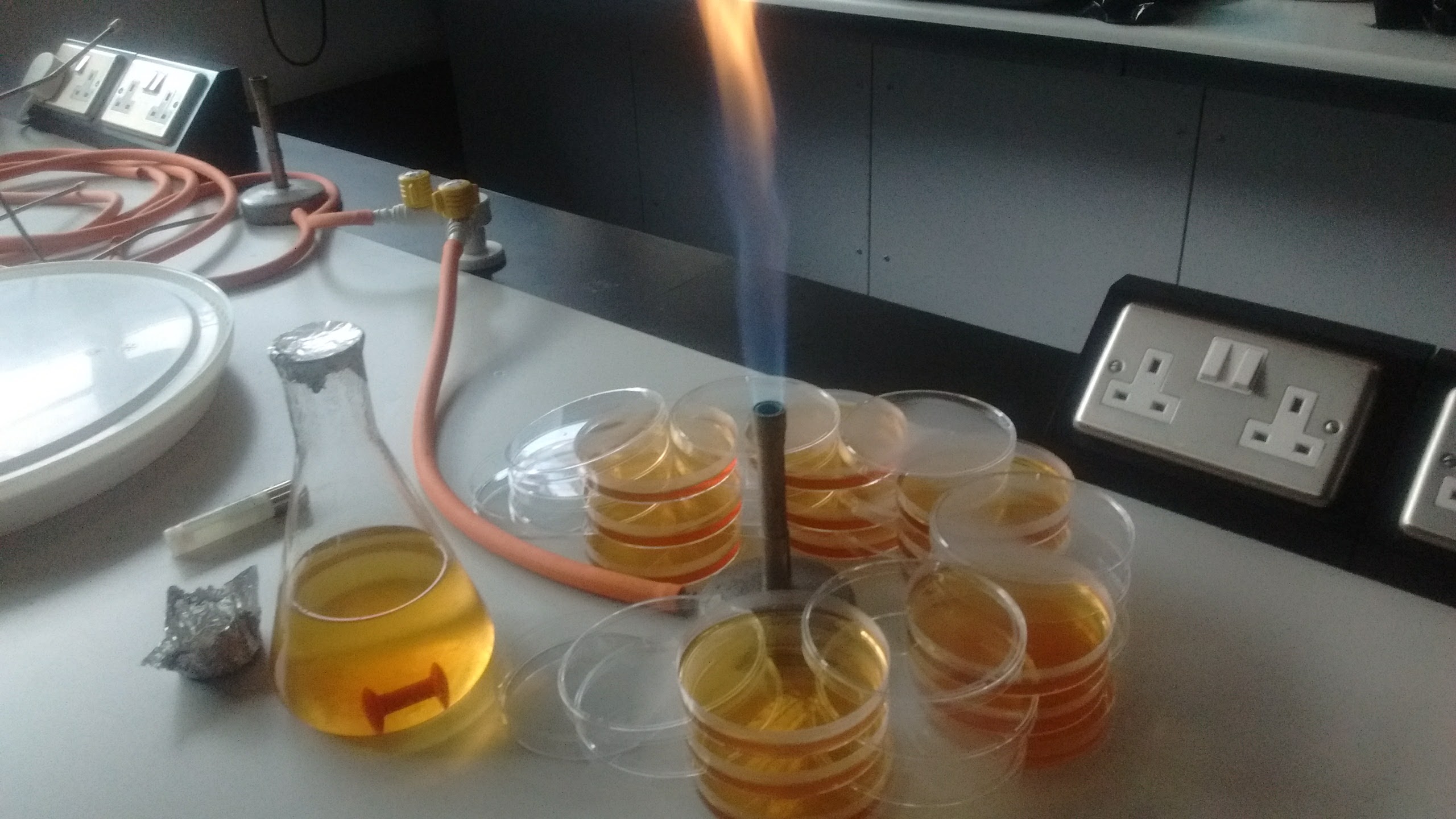
Sometime, you may need to add yeast partway through a brew. But what do you do if you dont happen to have an extra packet of brewers yeast lying around? Find our if any of your favorite craft beers use bottle conditioning. Bottle conditioned beer has yeast in the final bottles that provide the carbonation (as opposed to using carbon dioxide to artificially carbonate the beer, which is more common). You will know a beer is bottle conditioned if you see a thin layer of yeasty sediment at the bottom of the bottle. Luckily, Kinnegar bottle conditions their beer! Rustbucket to the rescue…

After pouring the beer, the sediment was transferred to a sterile 50ml Falcon tube. After a few days, we made culture media.
Solid Media Recipe:
- 14g beer agar media
- 400ml water
Ideally, you add beer to this media before autoclaving, but as none was handy, we didn’t.
Liquid Media Recipe:
- ~40g honey
- 1g tomato
- 400ml water
Becasue this is going into the actual beer, I wanted to only use ingredients I would be comfortable eating. The honey provides a sugar source, adn the tomato provides the nutrients that yeast need to thrive.

Yum
Item #46 on the list of things easier to do in the lab than in a kitchen: pouring plates.

Culturing Yeast from Bottles
- Prepare a sterile receptacle. I use 50ml tubes if you have them, but I have also used cryo-vials and others.
- Chill the beer and let the bottle sit undistubed for a bit
- Pour 99% of the beer into your glass, swirl the remaining 1% with the sediment at the bottom
- Immediately pour the remaining 1% beer/sediment into your vial.
- Recap, and plate as soon as you can. Prepare your solid media
- Sterilize something that you can use to streak out the sediment. (Bake a mug of toothpicks covered in foil, etc)
- Work around a flame if you can. Bunsens are great, but you can use the burner on your stovetop if you dont have one.
- Dip a sterile stick into the sediment from your vial, and streak thoroughly on the whole surface. If you have lots of growth, you can always dilution streak later.
- Let sit at room temp for a few days
Restreak to purify, and check the smell. Trust your nose: if it smells off, dont use it. If you are still unsure, try making bread with it. If the bread dough smells nice and yeasty, its probably yeast :)
To use, you will need to make a starter. Use the broth recipe above or a similar one. Using a sterile stick, transfer a colony to sterilized (and cooled) broth, and incubate at room tenp overnight, agitating periodically.
If you have a nice, cloudy, yeasty smelling starter the next day, go ahead and pitch it into your wort as you would normally!